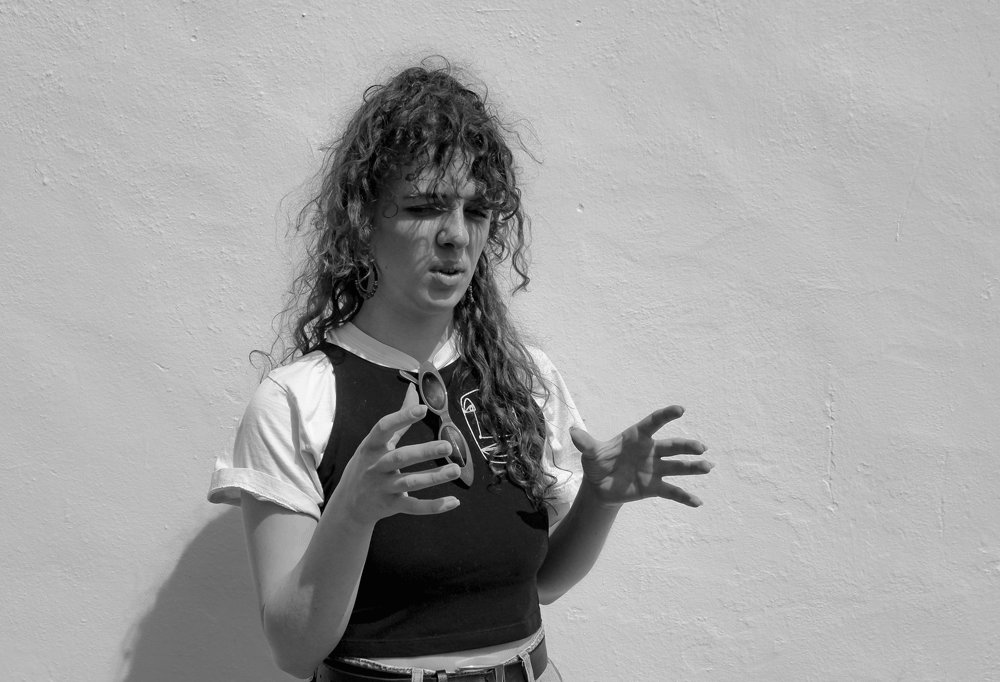


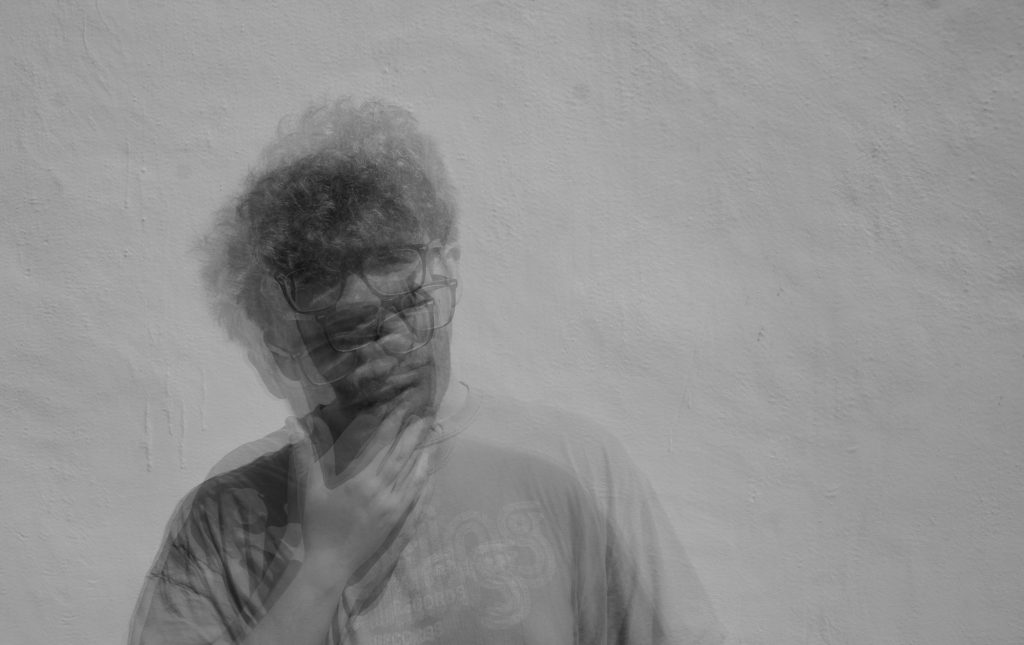




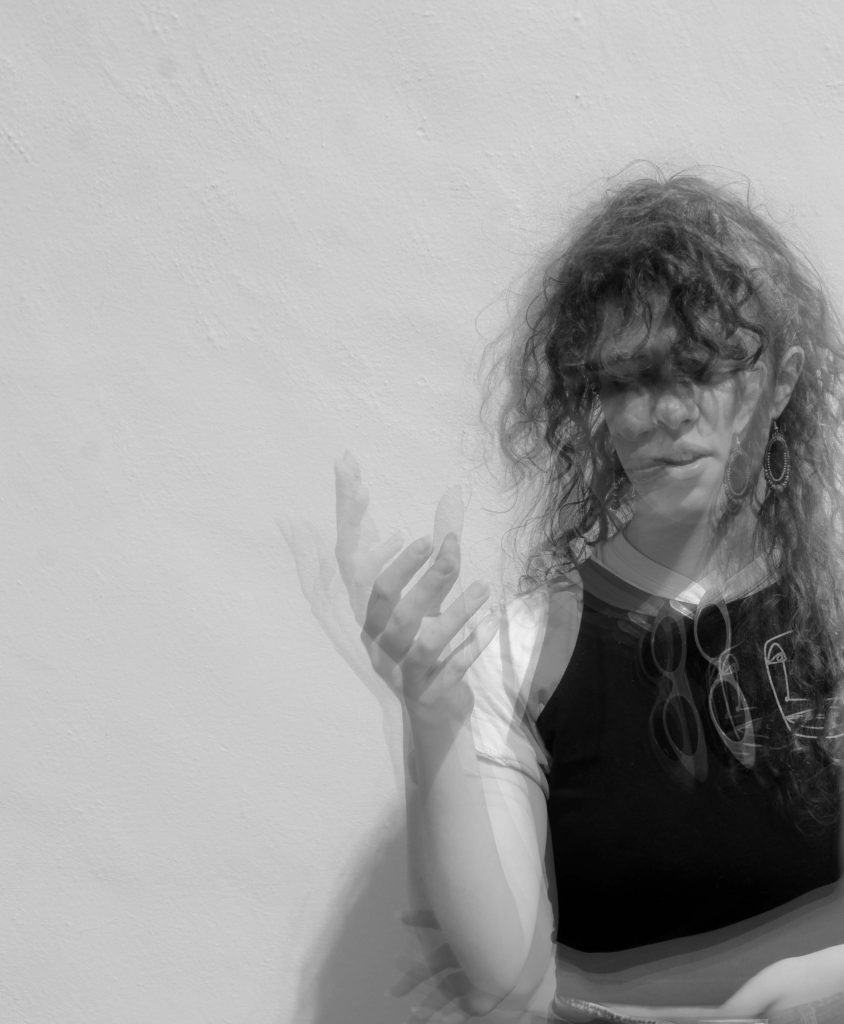
















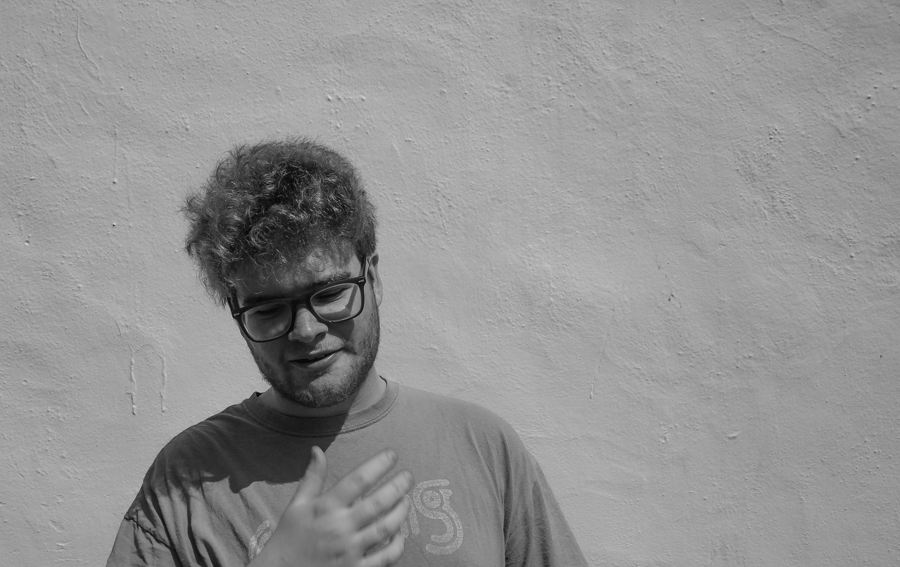





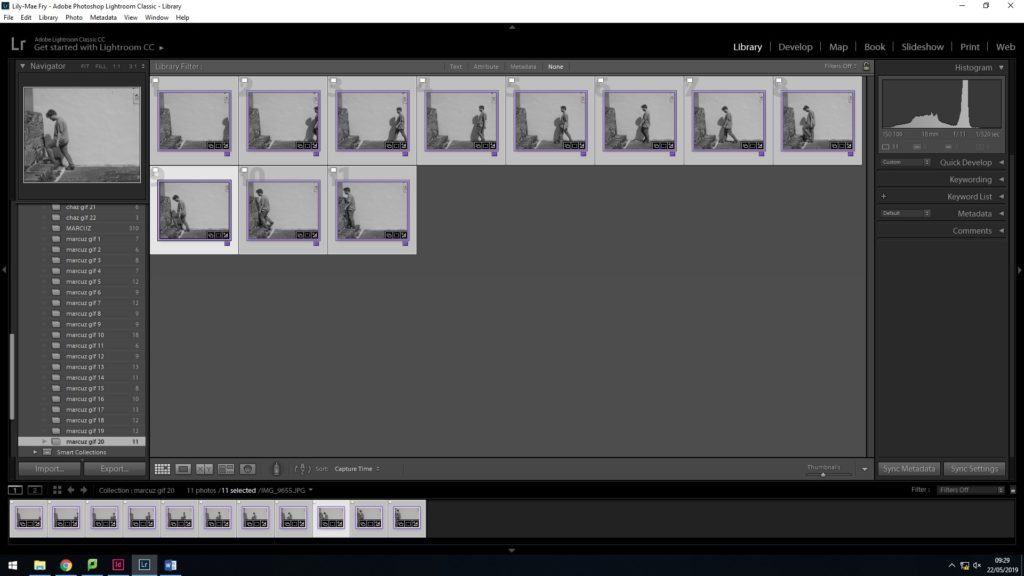
To begin editing I needed to organize all my material to make it easier to edit my photos into gifs. I used Adobe Lightroom because it has more editing features that best fit the way I need to edit. My plan is to make gifs from my photoshoot of each movement my subjects made while talking, so I have to edit photos in groups according to what movement they belong to. I grouped all pictures of one movement into one folder after sorting through my usable and non-usable material. After putting my gifs/movements into separate folders, I would highlight all the pictures from one folder so my editing would be synced. This meant every change I would make to a photo would be applied to all. This allows the final gifs to flow, especially when using the the cropping tool, with every frame matching the same editing style.
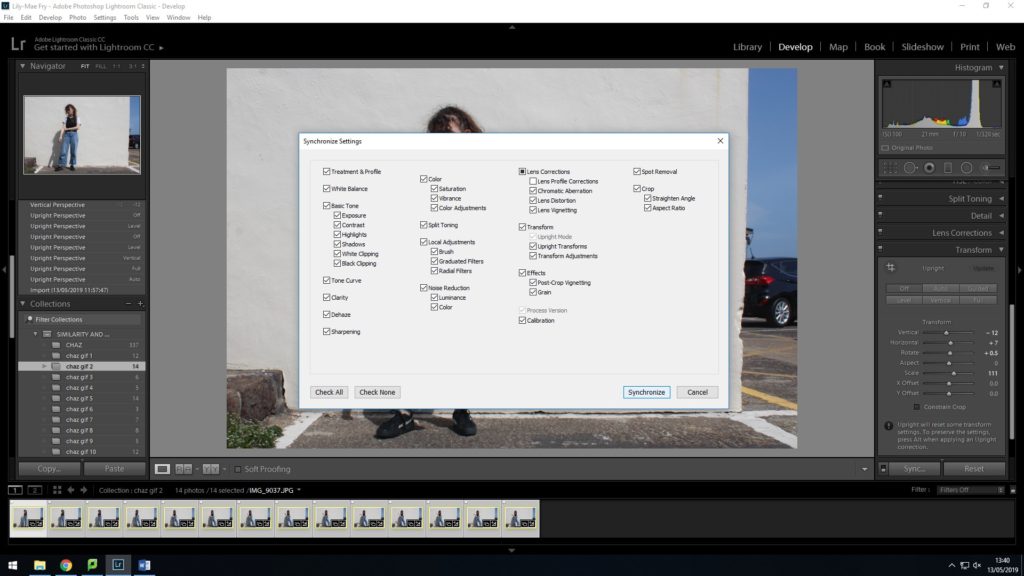
First I cropped the photos. I used the rule of thirds grid to adjust the position and focus of my subject in the photographs. I want the viewer’s eyes to adjust to my point of focus straight away when they look at my work. I decided on each point of focus for each set of photos by picking out the most interesting movement of my subject, no matter how subtle it is – the point of my project is pointing out the smallest or most interesting characteristics of animation in individuals that would otherwise go unnoticed during one’s everyday interaction with other people. The picture below is an example of hand movement. I made sure the point of interest was where the intersection of the horizontal and vertical lines were.
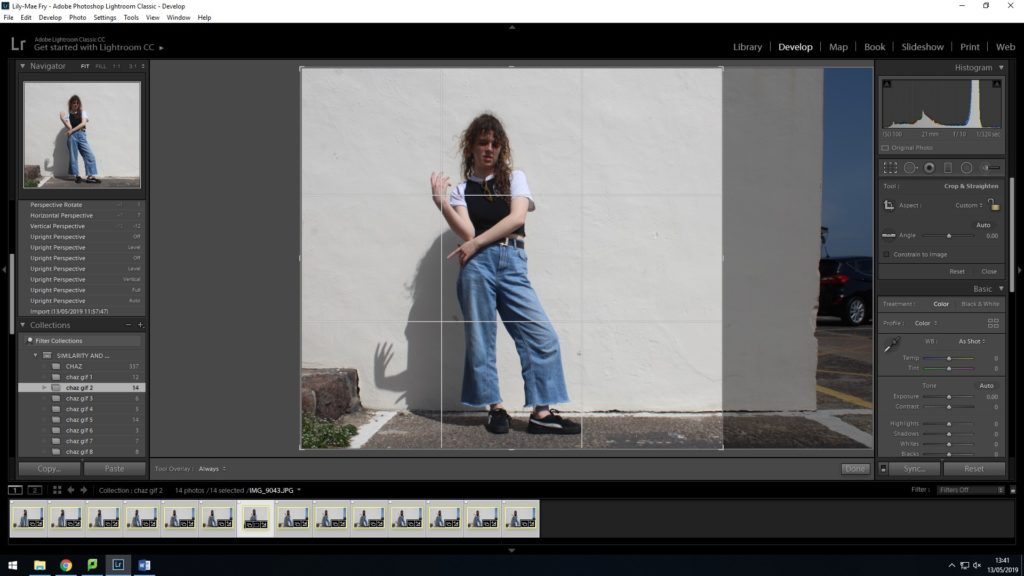
I originally edited my photos by draining some of the colour out of the picture, by reducing the saturation then warming up the image with yellow tint. I then decided that the image needed to be sharper in tones and contrast to make my points of interest stand out more so I decided to edit my images black and white. This references artists I have looked at like Edweard Muybridge but also, creates more definition in my photo. I think the photos need that definition and contrast in tones because the elements of a person’s being that I am trying to capture are already subtle. This means that my whole subject will stand out from their background rather than blend in and for example, in this photo, her hands are more prominent and forward from the background.


I also experimented with more extreme cropping to see how effectively I could draw attention to her hands, always keeping her hands within the intersections of the rule of thirds cropping guidelines. I quite like the contrast of extreme crops and close ups and the full picture, as if its showing the analysis of her movement and gestures that otherwise becomes elusive in the whole picture.

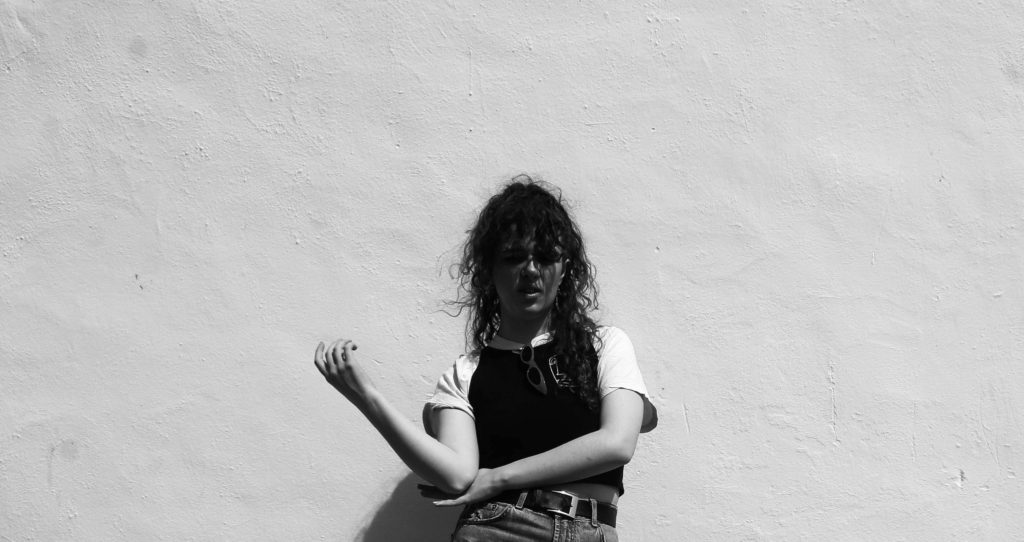




After I had finished editing each of my pictures from Adobe Lightroom ready to create into gifs, I moved to Adobe Photoshop, because it provides the feature of creating ‘Frame Animations’. To create a gif in Photoshop, I first imported one group of photos from my photoshoot into a stack. This means I can upload multiple photos into one document in layers. To create a gif from a selection of photos, they need to be in one document in the form of layers. After clicking ‘create frame animation’, you have to make frames from layers like a filmstrip. In order to keep my animations in a full loop, I copied the frames I already had and pasted them after the original frames so there were two sets. While the second set of frames were still highlighted I reversed the frames so instead of my gifs cutting at the end and restarting from the beginning, making it seem as though the animation is jumping from the finish back to the start, it instead reverses the movement, then goes back to the start.






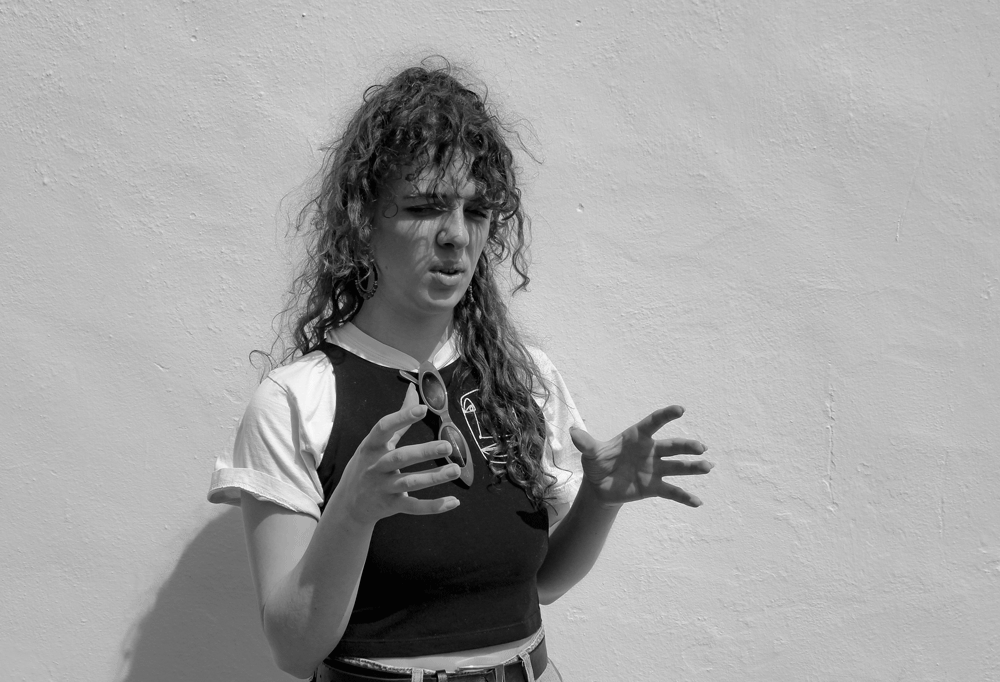
I wanted to experiment editing my photos like Etienne-Jules Marey. Marey edits his photos in layers, so one movement made up of many different images is shown in one still image.
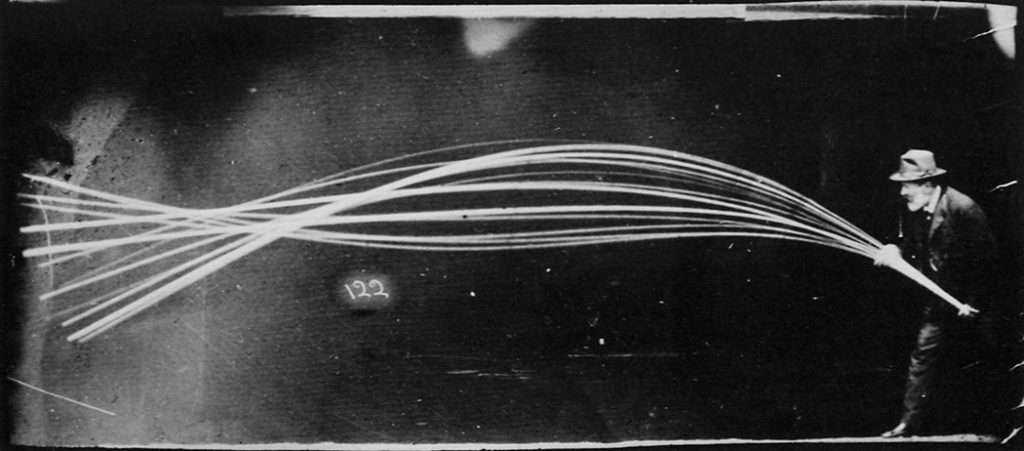
I Layered images by simply changing the opacity every layer in my document to 50 percent. I then decided to hide some of the layers because there were so many, you couldn’t see the other layered images underneath. I could also select layers that had more of a drastic change in movement and changed the opacity again of the remaining layers. Opacity ranged from 90% to 10% so some of the images wouldn’t be lost behind multiple layers. The picture below is an example of subtle movement; you can only noticed multiple nostrils.

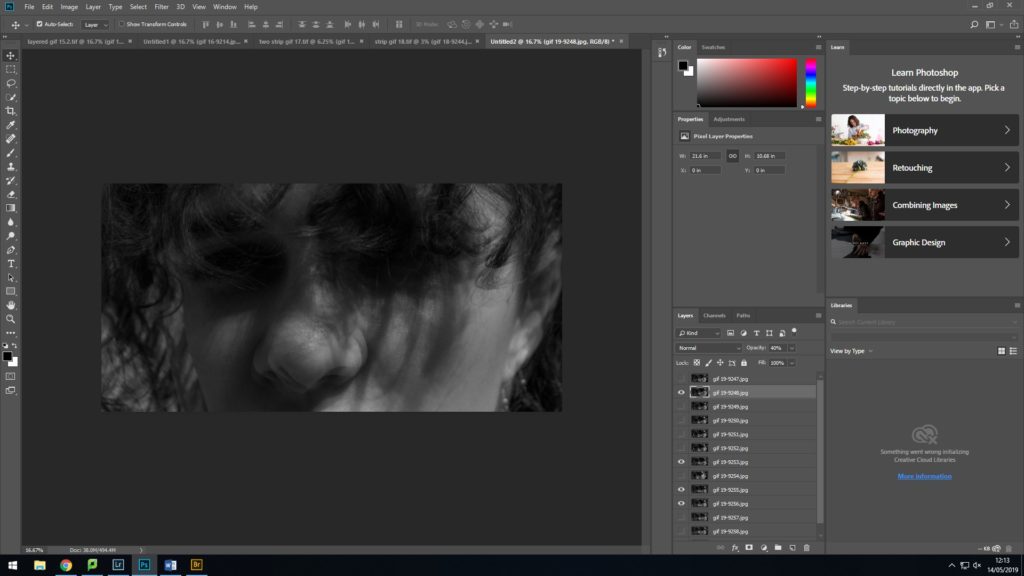
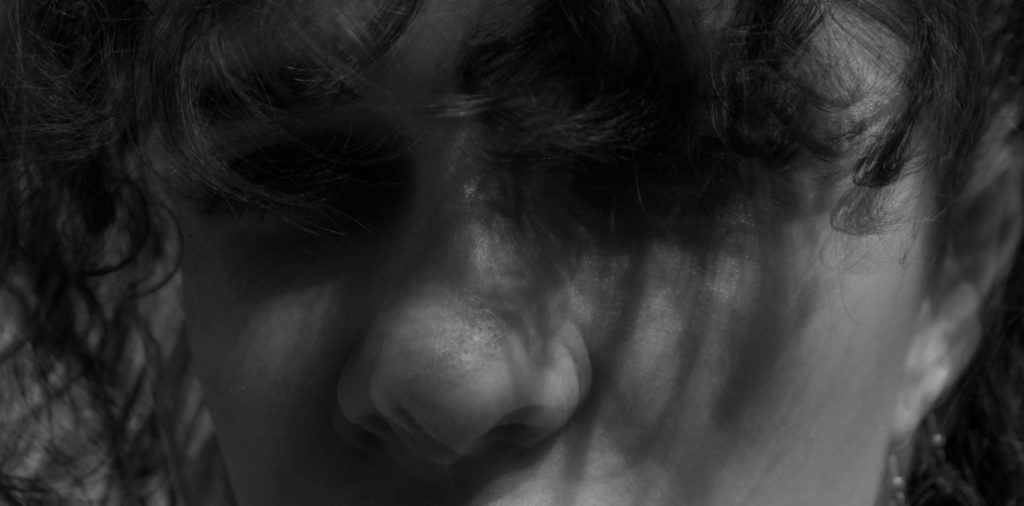
My last technique in editing was arranging a set of photos into a strip, imitating a film strip. This layout of images make it clearer to see movement and displays each picture in one as a still, allowing the viewer to take in each change of movement. I created this by expanding my canvas size. Doubling height and extending the width.






For my third shoot I used the same location so my photos appear more seamless when looking at my project as a whole. I also made sure to shoot around the same time of day as my previous shoot so the natural lighting was the same. This was around midday which gave me the maximum amount of lighting allowing my photos to come out clearer. This also kept similarity of my subject’s shadow, a subtle aspect that would of made the two shoots significantly different when editing and tying all my photos together. My second subject was more expressive with hand gestures, allowing me to capture sets of pictures just focused on the hands. Throughout my shoot I tried to capture my subject from different distances, from long shots to extreme close up’s of my subjects face to capture movement in facial expressions. One set back while capturing face expressions was the intensity of light. This meant that my subject was squinting from the sun and making her facial expressions less and more rigid. I managed to capture everything I set out to achieve and hopefully the editing process will be the same as I intend.



The point of my project is pointing out the smallest or most interesting characteristics of animation in individuals that would otherwise go unnoticed during one’s everyday interaction with other people. My plan for my photo shoots is to record different subjects when they talk walk and sit. The idea is to capture the mannerisms, gestures and facial expressions that a person makes while they interact with someone. The movements that people make are not consciously done. Instead, the movements a person makes are developed over time from mirroring people they are repetitively around and from self expression.
Following up on my first shoot, I devised a photo shoot that captured the movement of walking, talking and sitting. I set up my subject against a plain wall and asked them to speak about anything they liked. I made sure I engaged in the conversation to keep their movement fluid in terms of mannerisms and facial expressions. At the beginning of the shoot, getting my subject to speak and act naturally was hard because I wanted to capture their movement in its rawest form; the subliminal movements and characteristics everyone performs. I made sure I eased them into conversation to help them forget they were performing in front of a camera and to avoid forced movement or no movement at all. This was hard because of the nature of my concept and the shoot. By putting a camera in front of my subject it made them suddenly aware and conscious of their way of being and how they moved when interacting with someone. The same issue applied to getting my subject to walk and sit as the camera served as a reminder that I was recording their movement, which applied pressure of containing their natural state of being as they were aware of every movement they made that they usually wouldn’t be aware of. These issues eventually resided but watching someone conscious of their movement was as interesting as when they aren’t conscious of it.



The THEATRE OF CRUELTY is a form of Theatre originally developed by avant-garde French playwright, essayist and theorist, Henry Becque. Antonin Artaud – originally a member of the Surrealist movement in Paris during the 1930s – around 50 years after the first developments of the Theatre form, is also seen as a main contributor to the genre. His essays in The THEATRE AND ITS DOUBLE, were written with the intention of attacking theatrical conventions and the importance of language of drama, opposing the vitality of the viewer’s sensual experience against Theatre as a contrived literary form, and urgency of expression against complacency on the part of the audience. THE THEATRE OF CRUELTY can be seen as a break from conventional Western Theatre and a means by which the artists assault the senses of the audience, and allow them to feel the unexpressed feelings of the subconscious.

Antonin Artaud was well known as an actor, playwright and essayist of avant-garde Theatre. While Artaud eventually broke away from the Surrealist movement, the movement helped to shape his later theories on the THEATRE OF CRUELTY. Led by Andre Breton, co-founder, leader and principal theorist of Surrealism, Surrealist Theatre reflected a belief that the unconscious mind was a source of artistic truth. In his manifesto on Surrealism, Breton writes,
“pure psychic automatism, by which is intended to express, verbally, in writing, or by other means, the real process of thought. Thought’s dictation, in absence of all control exercised by the reason and outside all aesthetic or moral preoccupation.”
In 1926, Artaud founded the Theatre Alfred Jarry, which only produced non-naturalistic drama. The Theatre only lasted 2 years. After his work in Surrealist Theatre, Artaud went on to develop his theories on THE THEATRE OF CRUELTY after he was inspired by a Balinese dance troupe performance that he viewed at the Paris Colonial Exhibit in 1931. The performance conventions of Balinese dance were different to any Artaud had previously experienced, and he was struck by the intense physicality of the dancers. Artaud went on to publish his major work on THE THEATRE OF CRUELTY in his essays THE THEATRE AND ITS DOUBLE, several years later in 1937.
In his writings on the Theatre of Cruelty, Artaud points to both “Theatre” and “cruelty” that are separate from their colloquial meanings. For Artaud, Theatre does not merely refer to a staged performance before a passive audience. The Theatre is a practice, which “wakes us up. Nerves and heart,” and through which we experience, “immediate violent action,” that “inspires us with the fiery magnetism of its images and acts upon us like a spiritual therapeutics whose touch can never be forgotten.”
Similarly, cruelty does not refer to an act of emotional or physical violence. According to scholar Nathan Gorelick, “Cruelty is, more profoundly, the unrelenting agitation of a life that has become unnecessary, lazy, or removed from a compelling force. THE THEATRE OF CRUELTY gives expression to everything that is ‘crime, love, war, or madness’ in order to ‘unforgettably root within us the ideas of perpetual conflict, a spasm in which life is continually lacerated, in which everything in creation rises up and asserts itself against our appointed rank.”
Artaud felt that the focus of Theatre in the west had become far too narrow—primarily examining the psychological suffering of individuals or the societal struggles of specific groups of people. He wanted to delve into the aspects of the subconscious that he believed were often the root cause of human being’s mistreatment of one another. Through an assault on the audiences’ senses, Artaud was convinced that a theatrical experience could help people purge destructive feelings and experience the joy that society forces them to repress. For Artaud, “the Theatre has been created to drain abscesses collectively.” Insufficiency of language
Artaud believed that the focus of Theatre in the west had become far too narrow – primarily examining the psychological suffering of individuals or the societal struggles of specific groups of people. He wanted to explore the different aspects of the subconscious that he believed were often the root cause of the human being’s mistreatment of one another. Through an assault on the audiences’ senses, Artaud was convinced that a Theatrical experience could help purge people’s destructive feelings and experience the joy that society forces them to repress. For Artaud, “the Theatre has been created to drain abscesses collectively.”
Artaud felt that language was an entirely insufficient means to express trauma. Accordingly, he felt that words should be stripped of meaning and chosen for their phonic elements. According to scholar Robert Vork, “speech on THE THEATRE OF CRUELTY’s stage is reduced to inarticulate sounds, cries and gibbering screams, no longer inviting a subject into being but seeking to preclude it’s very existence.” Contradictory of this statement, Artaud claims that his characters are able to express things that others are unable to say. Vork claims, “Artaud seems to be suggesting that his play reveals emotions and experiences that we all attempt to proscribe and are unwilling to acknowledge, but which nevertheless occur.”
Stephen Barber explains that “THE THEATRE OF CRUELTY has often been called an ‘impossible Theatre’—vital for the purity of inspiration which it generated, but hopelessly vague and metaphorical in its concrete detail.” This impossibility has not prevented others from articulating a version of his principles as the basis for explorations of their own.
Personally, in my opinion, even though the aims of THE CRUELTY OF THEATRE are almost impossible to achieve in a performance; use of no language and opening up the minds of the audience to reveal their unconscious feelings and emotions that society represses. Achieving these aspects in a photograph is more simple than in a performance. By using a camera, it can capture the movement and facial expressions of a person that otherwise would not be noticed by an audience perspective because of how fast small hand gestures and transitions of facial expressions happen. A photograph also eliminates speech and language which almost counts as a distraction when analysing someones movement while they interact with other people. An audience would only be able to pick up on these movements that someone performs after long repetitive exposure and analysis. Even then, the subject that performs these movements in a daily routine of interaction and expression, they do not necessarily notice their own movement that has been built up by their personality and subconscious mind. The hand gestures and facial expressions that someone displays when interacting with another person is built and influenced from copying and mirroring movement from people they repetitively spend their time with, as well as their movements being unique to them. A photograph will eliminate distractions of speech and capture someones subconscious movement and preserve it. The only difference between a photograph and THE THEATRE OF CRUELTY is that it doesn’t stimulate any senses other than sight, but it allows the viewer to deconstruct and analyse the meaning.
Eadweard Muybridge was an English photographer important for his pioneering work in photographic studies of motion, and early work in motion-picture projection. Today, Muybridge is known for his pioneering work on ‘Animal Locomotion’ in 1877-78. He used multiple cameras to capture motion and stop-motion photographs that pre-dated the flexible perforated film strip used in cinematography. In the 1880s, he netered a very productive period at the University of Pennsylvania in Philadelphia, producing over 100,000 images of animals and humans in motion, capturing what the human eye could not distinguish as separate movements. He also edited and published compilations of his work, which greatly influenced visual arts and the developing fields of scientific and industrial photography. Muybridge became successful in photography, focusing principally on landscape and architectural subjects. He converted a lightweight carriage into a portable darkroom to carry out his work while he photographed the American west.
Muybridge took enormous physical risks to make his photographs, using a heavy view camera and stacks of glass plate negatives. A spectacular stereograph he published in 1872 shows him sitting casually on a projecting rock over the Yosemite Valley, with 2,000 feet (610 m) of empty space yawning below him.


The study is called ‘Sallie Gardener at Gallop’ or ‘The Horse in Motion’; it shows images of the horse with all feet off the ground. This did not take place when the horse’s legs were extended to the front and back, as imagined by contemporary illustrators, but when its legs were collected beneath its body as it switched from “pulling” with the front legs to “pushing” with the back legs.
In 1872, the former Govenor of California, Leland Stanford, a race-horse owner, hired Muybridge for some photographic studies to scientifically prove how horses moved during gallop. There had been debates about whether a horse were off the ground at the same time as trotting or galloping. Muybridge began to experiment with a range of 12 cameras photographic a galloping horse in a sequence of shots. The human eye cannot break down the fast movement of a horse trot and gallop. Up until this time, most artists painted horses at a trot with one foot always on the ground and at a full gallop with the front legs extended forward and the hind legs extended to the rear with all feet off the ground. Muybridge proved Stanford was right; horses have moments during their gallop where they are completely airborne however, Muybridge hadn’t quite perfected the process of capturing movement quickly.
Between 1878 and 1884, Muybridge perfected his method of photographing horses in motion, proving that they do have four hooves off the ground during their running stride. In 1872, Muybridge had settled Stanford’s question with a single photographic negative showing his horse trotting, also full airborne at the trot. Muybridge later made additional studies, as well as improving his camera for faster shutter speed and faster film emulsions. By 1878, spurred on by Stanford, to expand his experiments, Muybridge had successfully photographed a horse at trot. ‘Scientific American’ was among the publications at the time that carried reports of Muybridge’s ground-breaking images.

Stanford also wanted a study of the horse at gallop. Muybridge planned to take a series of photographs on June 15 1878, at Stanford’s ‘Palo Alto Stock Farm’ which is now the campus of Stanford University. He placed numerous large glass-plate cameras in a line along the edge of the track; the shutter of each was triggered by a thread as the horse passed [in later studies he used a clockwork device to set off the shutters and capture the images]. The path was lined with cloth sheets to reflect as much light as possible. He copied the images in the form of silhouettes onto a disc to be viewed in a machine he had invented, the ‘Zoopraxiscope’. This device was later regarded as an early movie projector, and the process as an intermediate stage toward the motion pictures of cinematography.
For my first shoot I wanted to experiment with movement and performance by taking a series of photos of a movement. I did my first shoot in the studio so I could have access to a neutral background so my subjects became the only focus in each photograph. This photo shoot was for the purpose of experimenting and practicing the creation process of moving imagery. I asked my friends to perform simple movements while I put my camera into the burst setting so I could take pictures quickly and gain a number of photos for each movement they performed. I then divided each group of photos for different movements into different folders in Lightroom so I could easily find each set of images. When editing a set of images I used the sync setting so each of the photos were edited identically the same, in terms of cropping and adjusting colour and shade corrections. I then exported each set of photos in separate folders and then uploaded every photo for each set into photoshop by loading the files into stacks. This meant that each photo was uploaded into one document but into individual layers for each set. I then made frames from each layer to create a frame animation. This means that each photo for a set is displayed in one file as a gif which demonstrates each movement in each photo and set.
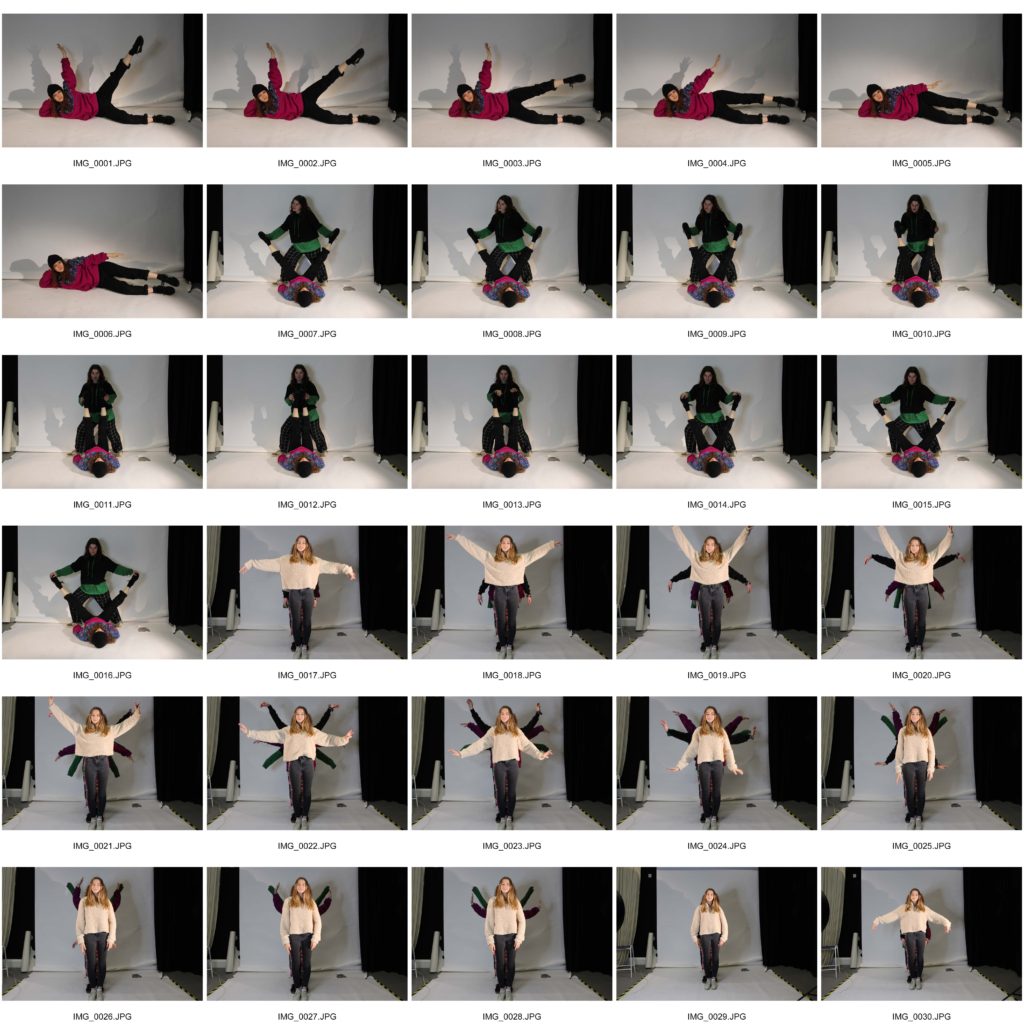
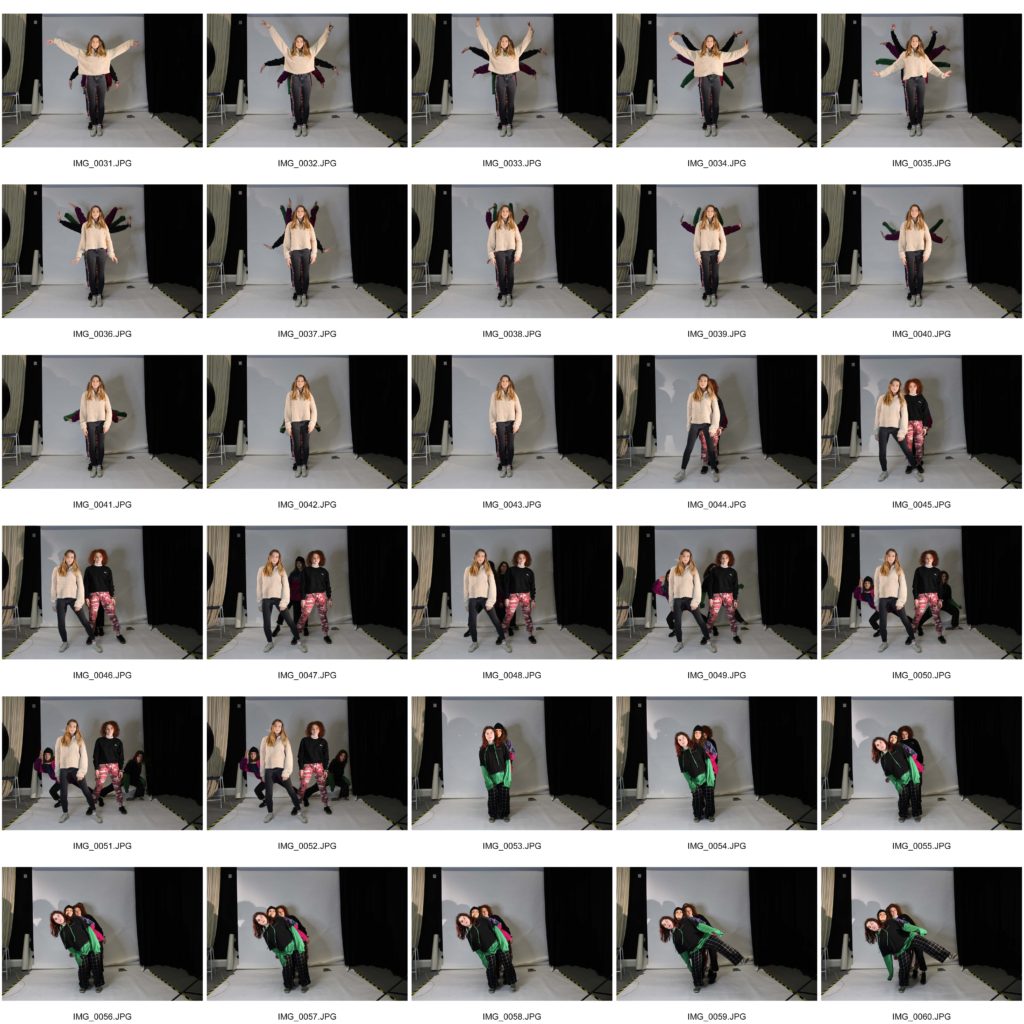
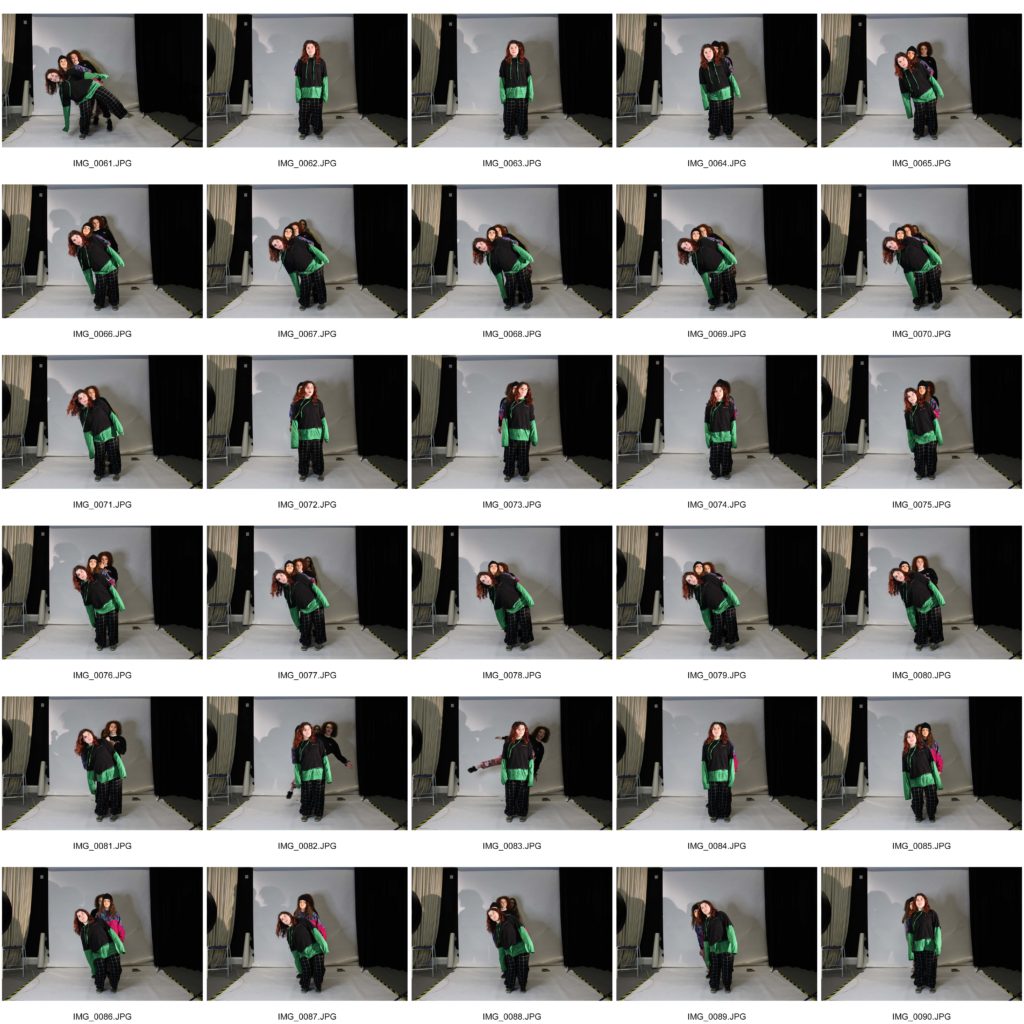
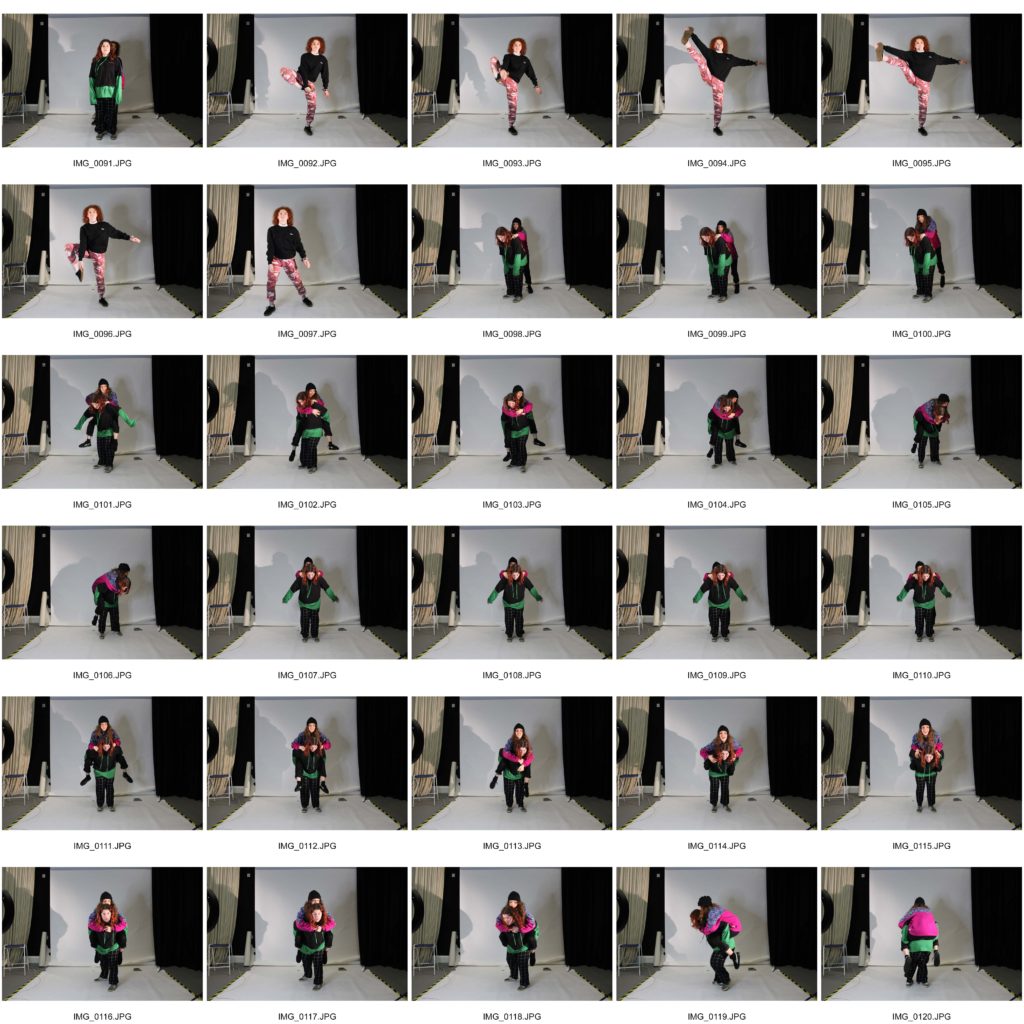


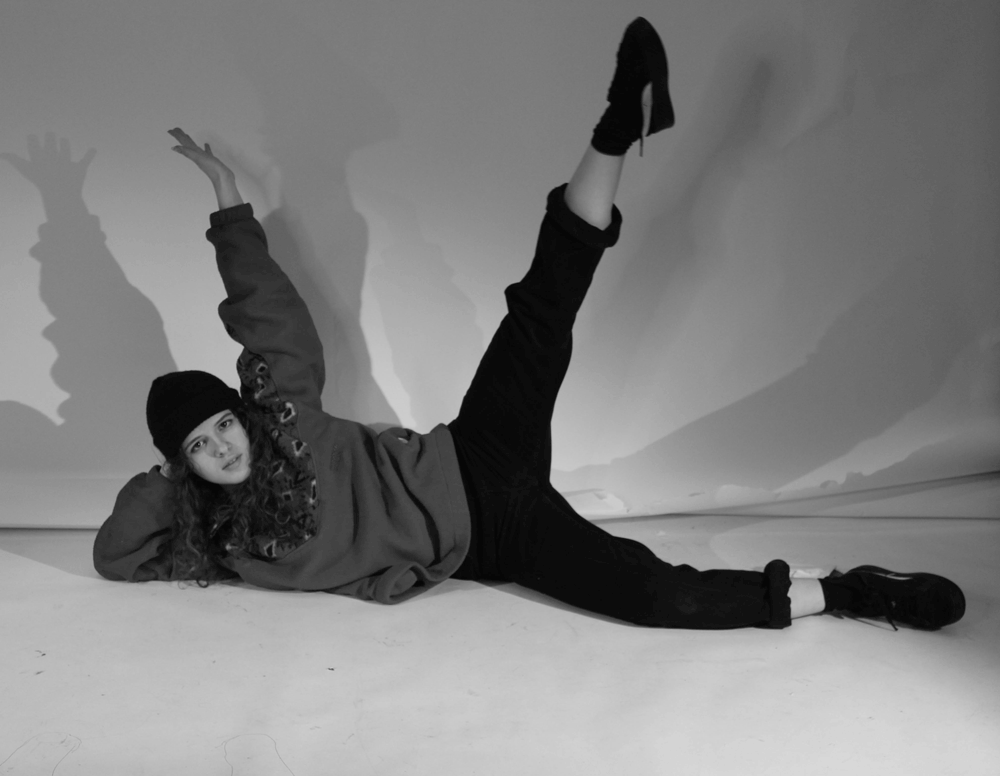

My initial ideas taken from the exam paper, Similarity and Variation have stemmed from the artist Jason de Graaf from the fine art section where reflection is a prominent aspect in his paintings. I want to take ideas from this artist and use it in my photography in regards of reflection. From this I can explore natural reflections, mirrors, kaleidoscopes and layering images to repeat subjects and objects like the repetition and reflection of mirrors. For example, some of Claud Cahun’s work shows layering and reflection of images to create surreal images through photo montages and performances.




I also want to explore creating GIFS, which takes the idea of moving through similar images to create a moving action or performance. For example Edweard Muybridge took pictures of animals walking and running to understand the way they moved. This then created a series of photos that represented film but in the form of a series of still images. Following up on the idea of montages, Thomas Florschuetz creates interesting compositions of individual images to create new images of abstract forms from portraits.





Étienne-Jules Marey was a French scientist, physiologist and chronophotographer. His work was significant in the development of cardiology, physical instrumentation, aviation, cinematography and the science of laboratory photography. Most of his photographs demonstrated and documented movement. All of his photographs are layered individual photos to evaluate movement in one photo. This also directly links to variation and similarity as each everyday movement that people and animals make, from walking to dancing is a variation of different and the same, simple movements.
CONCEPTS
As a drama student, movement is very important to completely portray another person. Whenever I am assigned a new character for a play, I constantly study the people I interact with. I analyse their mannerisms and pick up on the way the repeat movements when expressing themselves in certain emotions or storytelling or interactions with other people. Mannerisms tell a lot about a person, whether they have many or little movements. Even facial expressions are important to create a profile of someone. Certain facial expressions effect the way a person talks and of course, is the direct indicator of someones mood, equally so with their mannerisms. Also linking personalities with movement explains people and helps me understand varied characters that I meet in a day to day basis.
Relating to my previous project based on representation of women and how gender is performed, this analysis of movement highlights the divide between gender. Usually, you can tell when someone is acting in a certain way because they are aware how they are representing themselves and are self-conscious to fit into a particular stereotype that is constantly reinforced and pressured upon them, and when someone is not conscious of this fact. I think documenting simple acts like eating, walking and talking then comparing mannerisms and their performance with other individuals, particularly people of the opposite sex to see how far people have divided themselves within gender.
In this project I would like to research various playwrights who focus on movement rather than words, such as Antonin Artaud ‘Theatre of Cruelty’, and theorists such as Judith Butler and her ‘Performative Theory’.

Marcel Duchamp was a painter, sculptor and writer whose work was associated to Cubism, Dada and conceptual art. Duchamp is commonly regarded as one of the three artists who who helped to define the revolutionary developments in the plastic arts, responsible for significant developments in painting and sculpture and most importantly a significant influence in conceptual art. By World War 1, Duchamp had rejected the work of many of his fellow artists as ‘retinal’ art, served only to please the mind whereas he wan’t to use art to serve the mind.
‘Bicycle Wheel’ was Duchamp’s first ‘readymade’, a class of objects he invented to challenge assumptions about what constitutes a work of art. Duchamp combined two mass-produced parts—a bicycle wheel and fork and a kitchen stool—to create a type of nonfunctional machine. By simply selecting prefabricated items and calling them art, he subverted established notions of the artist’s craft and the viewer’s aesthetic experience.
Duchamp was the first to create art that wasn’t regarded as traditional art. His sculpture of a stool and bicycle wheel created many opposing opinions of what art is and what you can call art. However, his sculpture was revolutionary for conceptual art. It helped move away from traditional ideas of art and broke away from the restrictions of traditional art.
Conceptualism, is art in which the ideas or concepts in art take over from the dominant definition and ideology of traditional art of material and technical aspects that create an overall aesthetic to please the eye. The idea or concept is the most important aspect of the art, the idea becomes a ‘machine that creates the art’, it questions the nature of art. Artist Joseph Kosuth wrote in his essay ‘Art after Philosophy’ 1969, ‘All art is conceptual because it only exists conceptually’.



Above is the work of John Baldessari from his work of ‘Arbitrary games’ with the concept of accomplishing an arbitrary goal through games. For example ‘Throwing Three Balls into the Air to get a Straight Line’ 1973. Baldessari photographed his results of while attempting his arbitrary goal and eventually selected the best of 36 tries. The writer Eldritch Priest links this particular work by Balderssari as an early example of post-conceptual art. Most of Balderssari’s conceptual art was made after he made the statement; ‘I will not make anymore boring art’ which he recorded himself writing down on a piece of paper, repeating the line many times and even named the video art itself.





Following up on the introduction to conceptual art we conducted an experiment of creating photos from playing ‘Arbitrary games’, inspired by John Baldessaris works and the influence of conceptual art instigated by Marcel Duchamp.
Our first experiment was simply taking a picture of our subject while they tried to avoid having their picture taken called ‘boxing match’. I set my camera to a high shutter speed and to take bursts of photos to adjust and keep up with the fast pace of movement. The point was to let spontaneity, fate and chance takeover our photo shoot and the images we produced, letting the unexpected take place without being pressured for everything to go to plan. For example, the boxing match portraits were produced because of the dynamics between the photographer and the subject; working together but conflicting with each other.

Another game we played that involved chance dictating the pieces we produced was a coin toss game. We were given two A3 photographs and we played coin toss on top of one. If the coin landed on the picture and landed the side you picked [heads/tails] you had to cut out that area of the picture, cutting around the coin with a knife. After cutting out a few circles on the first photograph, we placed it on top of the other photograph. This meant that the picture underneath the picture with the circles cut out, peaked through in the circles, revealing different aspects of the photograph underneath.